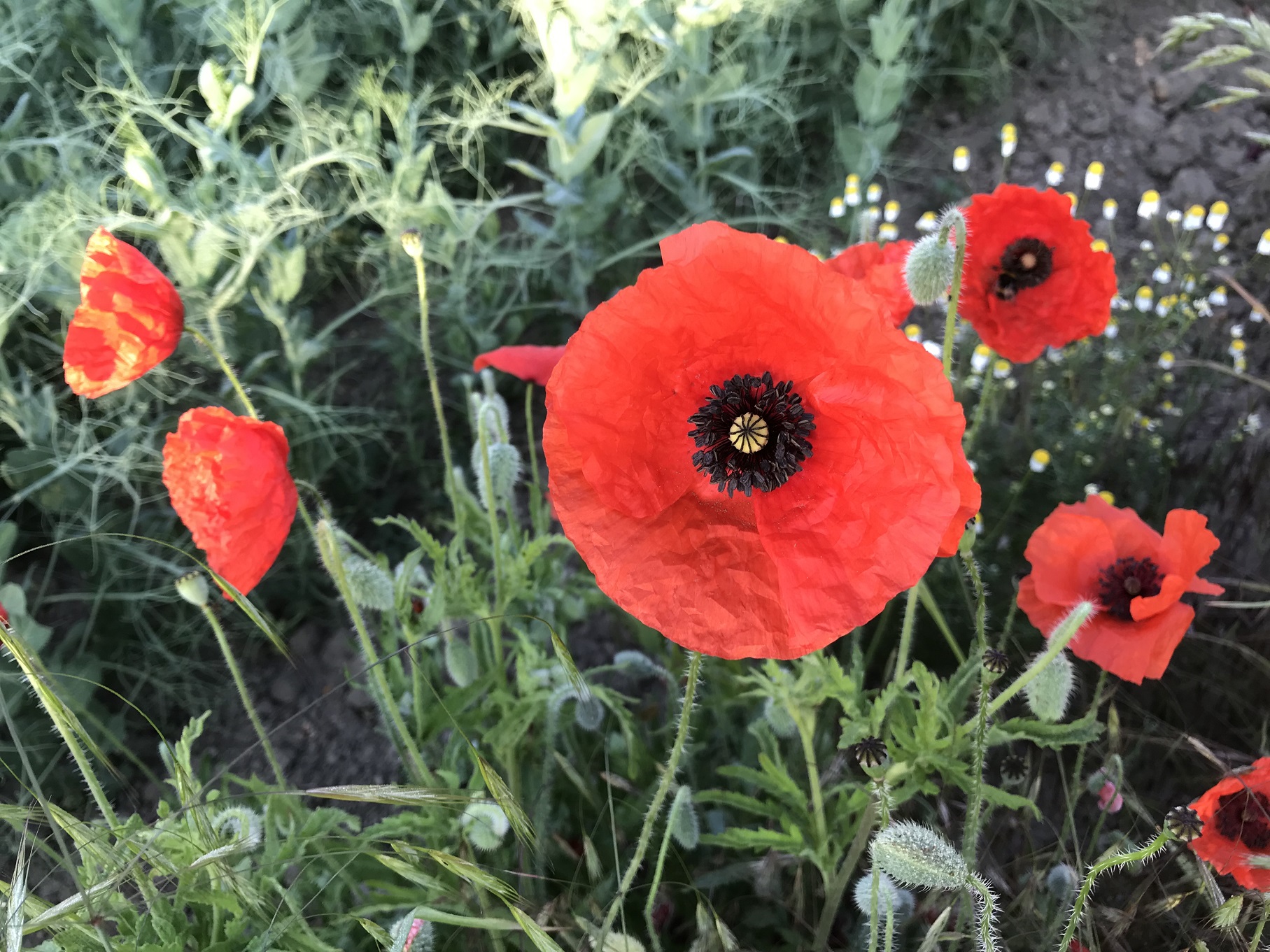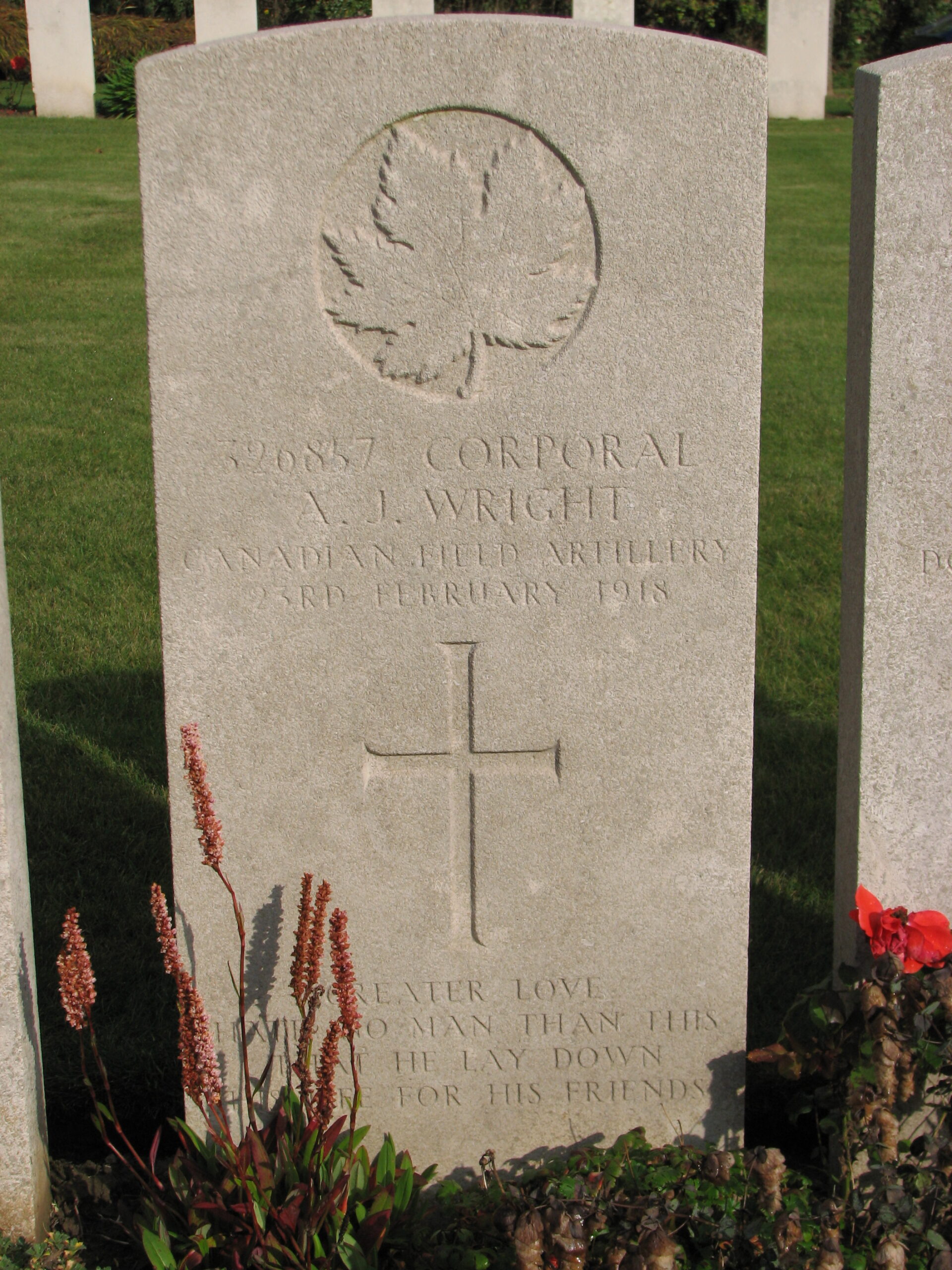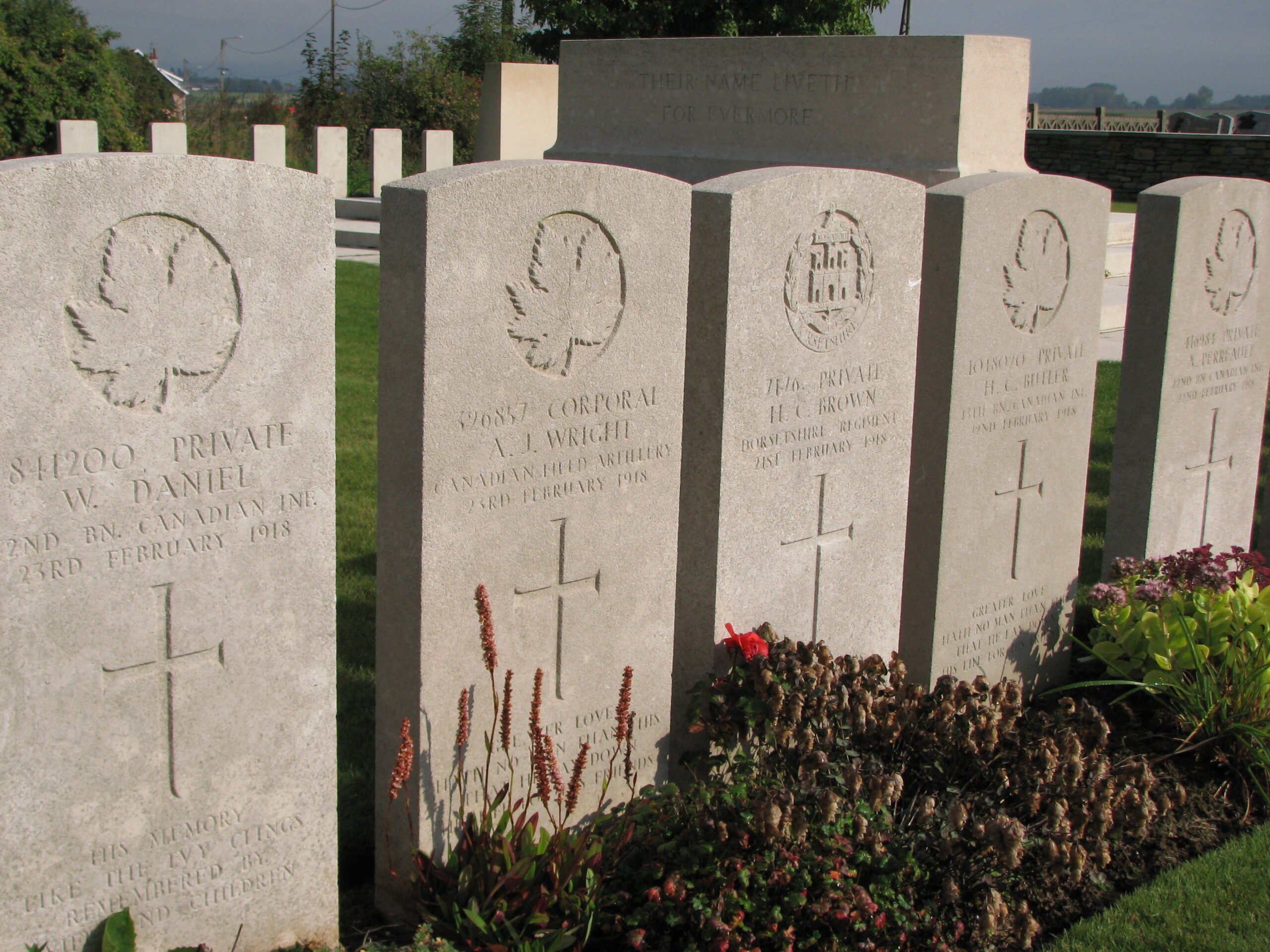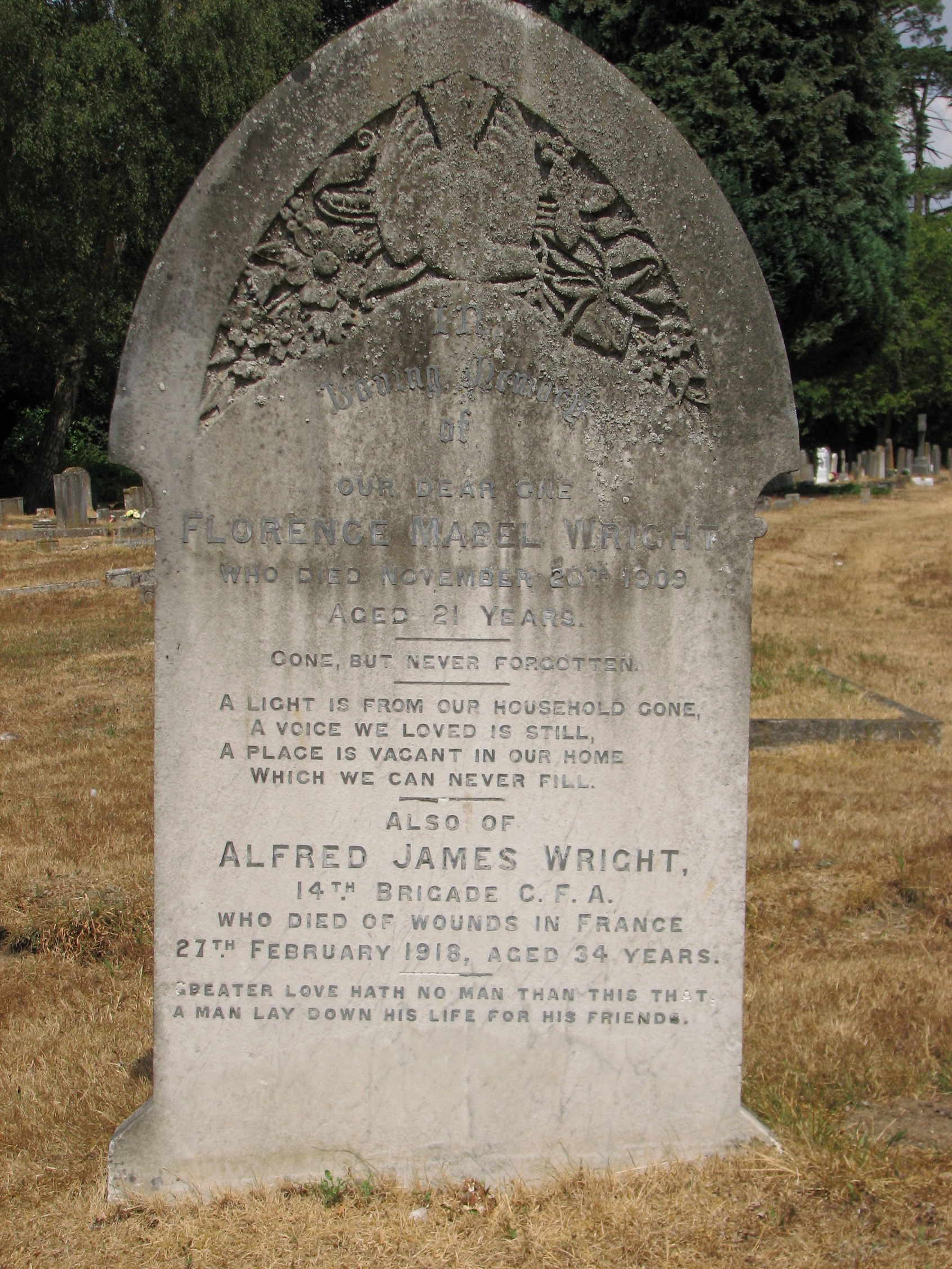Alfred Wright (1883 - 1918)
Alfred emigrated to Canada some years before the War. In 1916, he volunteered to join the Canadian Expeditionary Force and later served on the Western Front with the Canadian Field Artillery.
- 70
- Died in the Great War
- 51.979773, 1.021524
Details
| Name: | Alfred James Wright |
| Service: | Canadian Expeditionary Force |
| Unit: | 58th Howitzer Battery, 14th Brigade, Canadian Field Artillery |
| Regimental Number: | 326857 |
| Rank: | Corporal |
| Date of Death: | 23rd February 1918 |
| Age: | 34 |
| Buried: | Plot III, Row E, Grave 39, Barlin Communal Cemetery Extension, Barlin, France |
Family Background and Early Life
Alfred Wright was born in East Bergholt on 12 November 1883, the second child and eldest son of Robert and Mary Ann Wright.
Both of Alfred’s parents were from the village. Robert Wright was an Agricultural Labourer, who had married Mary Ann Dale in late 1881 or early 1882. Together they would have nine children, of whom six were still alive in 1911.
The Wright family moved around the village a little in the first decade of their marriage, possibly reflecting that they may have been living in tied cottages provided by Robert’s employer. For a time in the late 1880’s and early 1890’s they lived on Puttocks Lane and also briefly on what was then called East End Road (but is now called Straight Road or the Mile Straight).
By 1894, the family had moved to that part of the village near High Trees Farm. They would remain living there many years..
Alfred started at the village school at Burnt Oak in June 1888. After leaving School, in the early 1890s, rather than following his father into agriculture Alfred learnt a trade. The 1901 Census shows his occupation as Bread Maker and Journeyman Baker.
At some point between 1901 and 1911 Alfred left England for a new life in Canada, though unfortunately the exact date is not known. By May 1916, he was working as a Clerk at Fredericton, New Brunswick, quite possibly at the Lorne Hotel where he lived.
Joins the Canadian Expeditionary Force
On 17th April 1916, at Fredericton, Alfred volunteered to join Canadian Expeditionary Force (C.E.F.).
The C.E.F. was the name given to the field force created by Canada for service overseas in the War. Canada was the senior Dominion of the British Empire, and automatically went to war with Germany with the British Declaration on 4 August 1914. It is perhaps forgotten today that many of those from the dominions – quite probably the majority – considered themselves British, either because they were born in the United Kingdom, or had close family links there.
Of the 630,000 Canadians who enlisted for military service, 424,000 went overseas as part of the C.E.F. The first contingent being sent to France in 1914, and over the next 4 years, the Canadians earned themselves a reputation as a formidable fighting force, often being used as assault troops.
Alfred’s Service Papers show that he was 5 foot 7 1/2 inches tall, with a dark complexion, brown eyes and brown hair.
He was posted to the Canadian Field Artillery (C.F.A.), with the rank of Gunner, and undertook his initial training in Canada. On 11th September 1916, Alfred embarked on the S.S. Metagma at Halifax, Nova Scotia, bound for Liverpool, England, arriving there 11 days later.
Alfred’s training continued in England. In January 1917, he was transferred to the 58th (Howitzer) Battery, of the 14th Brigade of the Canadian Field Artillery. 1 The 58th Battery, C.F.A. was equipped with six 4.5 inch Quick Firing howitzers.
Most of Alfred’s time in England was spent in army camps, first in Milford, and later in Witley. However, a period of leave would have given him the opportunity to visit his parents in East Bergholt, had he wished.
France
In the late afternoon of 21st August 1917, the 58th Battery sailed from Southampton, disembarking in Le Havre in France the following day. 2 The Battery’s War Diary records that the unit at this time consisted of: 6 officers, 195 Other Ranks, 6 guns, 176 Horses and Mules, 16 wheeled vehicles.
Towards the end of the first week in September, the Battery moved up to the front, and took over positions in the French town of Lievin, located in the mining area around Lens. They would remain there for most of the next six months, though for short periods, elements of the Battery were transferred to the nearby sectors of Cambrin (near Bethune) and Loos.
Throughout this period, the Brigade War Diary records that they were often subjected to enemy bombardments, both with high explosive and gas shells. The 58th Battery themselves were frequently employed in neutralising the German artillery (often using gas shells) and also for barrage work and wire cutting (using either shrapnel or high explosive shells).
Whilst in France, Alfred was confirmed as a Corporal, having been acting in that rank for several months.
The Brigade War Diary for 21st February 1918 records “Enemy very quiet during night. Artillery was more active than usual during day. An area shoot … in which our batteries are, caused two casualties in 58 Battery … both wounded”. 3 Extract from the War Diary of 14th Brigade, Canadian Field Artillery for February 1918, held by the Library and Archives Canada. Alfred was one of the two men, he had been wounded by shrapnel in the stomach.
Alfred was evacuated to the 1st Canadian Casualty Clearing Station, located approximately 8 miles away, near the village of Barlin. He died there of his wounds, early in the morning of 23rd February.
Alfred was buried in the Barlin Communal Cemetery Extension where he rests to this day. The Extension now contains 1,094 Commonwealth burials from the Great War.
Postscript
Alfred is also remembered on his sister Florence’s gravestone in East Bergholt Cemetery. Florence died in 1909 at the age of 21, so the inscription to Alfred was added later.
Alfred’s parents remained living in East Bergholt. Mary Ann died in 1930 and Robert died in 1939.
Copyright © Mark Ashmore, 2024
- 70
- Died in the Great War
- 51.979773, 1.021524





